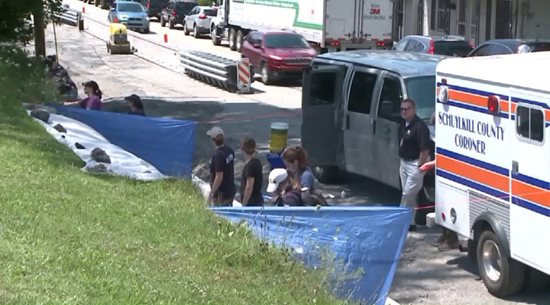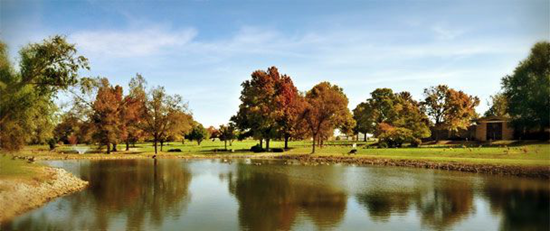
Usually the contents of a modern grave site are known, and a person's final resting place is clearly documented.
But there are occasional occurrences - ancient and modern - when human remains are found in unexpected places, and the discoverers are taken by surprise. Here are seven of those incidents.
1. Otzi the Iceman
In 1991, residents living in the mountains bordering Italy and Austria came across a remarkably well-preserved body of a man soon to be known as "Otzi." No other bodies were found in the area, giving rise to the theory that Otzi died by accident or by malicious intent. The remains of an arrowhead deep in his left shoulder pointed toward the latter.
After detailed analysis, National Geographic reported on more facts that came to light. Otzi lived some 5,300 years ago and was about 40 years old at his death. His body was covered with more than 50 tattoos, probably made by making small cuts in the skin and then applying charcoal to the open wounds. He also suffered from "modern" complaints such as gallstones, hardened arteries, crippled joints, gum disease and Lyme disease.
Remarkably, Otzi contained enough genetic material to extract DNA that linked him to 19 modern progeny.
Otzi is now on view at the South Tyrol Museum of Archaeology in Bolzano, Italy.
2. Wealthy ancient Roman women...in Ethiopia?
The Guardian reported in June 2015 that an excavation of the ancient kingdom of Aksum in modern-day Ethiopia yielded numerous artefacts - but the scientists were surprised by the burial sites of two females from Roman times. Investigation of the remains yielded scant clues as to the identity of the women. Both were obviously of the wealthier class, as they were found buried with jewellery and drinking vessels. One woman was buried wearing an intricate necklace made from more than 1,060 beads.
The finding of objects of Roman origin solidified the theory that Aksum had been an important stop along Roman trade routes.
3. The enigmatic Emma (and Richard)
Probably the most publicized recent discovery of an unexpected gravesite was the 2012 finding of the remains of King Richard III beneath a parking lot in the English city of Leicester. But the king was not alone. In 2013, in an area adjacent to Richard's body, archaeologists discovered the burial site of an elderly woman who most likely lived sometime in the 14th century. A scientist from the University of Leicester examined the remains and then opined that due to the "elaborate stone sarcophagus" the woman was most likely a notable person at the time of her death.
The search was on for her identity, and some have claimed she may be a woman named Emma who had married a local man known as John of Holt. But the university scientist told CNN in March 2015 that the scant clues "…make it impossible to say for certain (if the skeleton) is that of Emma" and that the skeleton's identity will likely "forever remain anonymous."
4. An Irish skeleton tree
Crossing the waters to Ireland, in September 2015 the website io9 reported on the grisly find of a body in the town of Collooney. The body was unearthed when a fierce storm hit the area and knocked down a large beech tree. The tree had covered the remains of a skeleton, and the corpse had been so tangled in the root ball that the act of the storm uprooting the tree snapped the skeleton in half - the legs remaining in the ground and the torso and skull dangling from upended roots. Irish Archaeology reported the result of scientific findings stating that the skeleton belonged to a young adult male who had been killed by a knife or other sharp weapon between 1030 and 1200.
5. Glacial soldiers
Photo via War History Online
More recent times have also yielded mysterious remains in mysterious places. The Telegraph reported in January 2014 that the remains of what appeared to be three military men had been found in 2004 by a mountain tour guide in the area near San Matteo, Italy. At first it was thought that the remains belonged to three soldiers who had died in the 1918 Battle of San Matteo during World War I. But the lack of weapons and the presence of bandages and other similar objects led investigating scientists to believe that the three had been some kind of medical men.
In 2012, the bodies of two Austrian soldiers were found mummified and in good condition on a glacier near Peio, Italy. Both men had been shot in the head, but there were no other clues to their identity. They were later buried anonymously alongside the San Matteo bodies.
6. Mass grave for Spanish influenza
Even in modern times, unexpected gravesite events continue to be found. According to newser.com, construction workers near Schuykill, Pennsylvania, unearthed a mass gravesite on some private property in the area. The current owners of the property bought the land in 1997 and had been told of local legends claiming that the area contained a burial site for victims of the 1918 Spanish influenza epidemic that had killed more than 1,500 residents of the environs.
The remains were collected and reburied in a proper cemetery, but not before DNA material had been collected in an effort to identify the individual skeletons and to notify possible living relatives.
7. One family, two cemetery mix-ups
Startling gravesites are not limited to notable events. In May 2015, Louisville's Courier-Journal reported the curious episode involving the remains of the elderly Nana Dudley.
Nana had purchased a plot at the Evergreen Cemetery in Louisville before she died. After her death and funeral, the family gathered at the cemetery and were shocked to find Nana's grave occupied by another casket containing an unknown person. The family immediately contacted cemetery officials, who pleaded ignorance. They stated that they had been overseeing the burial grounds only since 1995 and could not be held responsible for mistaken interments previous to that time.
Bizarrely, the Dudley family had experienced the exact same situation in 2013 when a relative of the family was to be buried only to find another casket occupying the plot.
In both situations the bodies were laid to rest in alternate graves.
From the apparent murder of Otzi to the unexpectedly portable Nana Dudley, modern researchers are becoming more and more familiar with the surprising burial sites of people ranging from the rich and famous to personages notable only for the surprising gravesites they inhabit.
Related on Mother Nature Network:






No comments:
Post a Comment
Please adhere to proper blog etiquette when posting your comments. This blog owner will exercise his absolution discretion in allowing or rejecting any comments that are deemed seditious, defamatory, libelous, racist, vulgar, insulting, and other remarks that exhibit similar characteristics. If you insist on using anonymous comments, please write your name or other IDs at the end of your message.